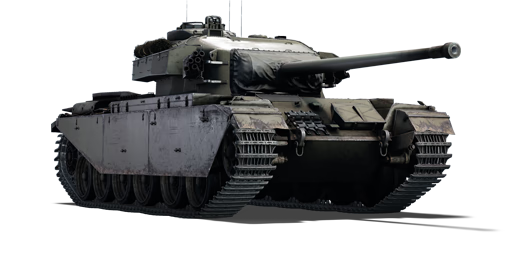



The Centurion Mk 3 was the third variant of the Centurion medium tank family. The 84 mm Ordnance QF 20-pounder tank gun was installed in this variant, which provided significantly superior accuracy thanks to a newly developed two-plane fully automatic stabilization system (modified from the Centurion Mk 2). This enabled the gunner to fire while moving and manoeuvring. The ammunition rounds were also significantly heavier, able to penetrate the frontal hull of Soviet T-34-85 medium tanks and IS-2/IS-3 heavy tanks. The second modification was the substitution of a much lighter conventional 7.62 mm Besa light machine gun for the 20 mm Polsten autocannon (which was included in the plans but not implemented, as it was deemed to have be an unnecessarily large calibre for dealing with normal infantry troops). There were also two stowage places on the glacis for track links. The Centurion Mk 3 was introduced in 1948, with more units produced than the Centurion Mk 2. They saw considerable service in the Korean War and were slightly more effective on the battlefield than the U.S. Army M26 Pershing and M46 Patton.
Introduced in Update 1.55 "Royal Armour", the Centurion Mk 3 is a tank with playstyles that are very similar to modern main battle tanks. With the two-plane fully automatic stabilization system, players never have to worry about opponents appearing around corners and stopping to take aim. The gun sights are effectively stabilized when manoeuvring, guaranteeing that the player always fires first upon spotting an enemy. The introduction of the 84 mm Ordnance QF 20-pounder tank gun, capable of penetrating as much as 384 mm of armour at point-blank range with armour-piercing discarding sabot (APDS) ammunition, greatly increases firepower. This effectively allows the player to attack the opponent's heavy tanks on their own terms, serving as a real ancestor to the main combat tank doctrine.
| Ammunition | Type | Armor penetration (mm) at a distance: | |||||
|---|---|---|---|---|---|---|---|
| 10 m | 100 m | 500 m | 1000 m | 1500 m | 2000 m | ||
| APCBC | 239 | 236 | 222 | 206 | 192 | 178 | |
| HE | 19 | 19 | 19 | 19 | 19 | 19 | |
| APDS | 385 | 381 | 364 | 344 | 325 | 307 | |
| Smoke | 3 | 3 | 3 | 3 | 3 | 3 | |
| Belt | Belt filling | Armor penetration (mm) at a distance: | |||||
|---|---|---|---|---|---|---|---|
| 10 m | 100 m | 500 m | 1000 m | 1500 m | 2000 m | ||
| AP-I/AP-I/AP-T | 9 | 8 | 6 | 3 | 0 | 0 | |












Mobility | |
|---|---|
Protection |
|---|
Firepower | |
|---|---|
